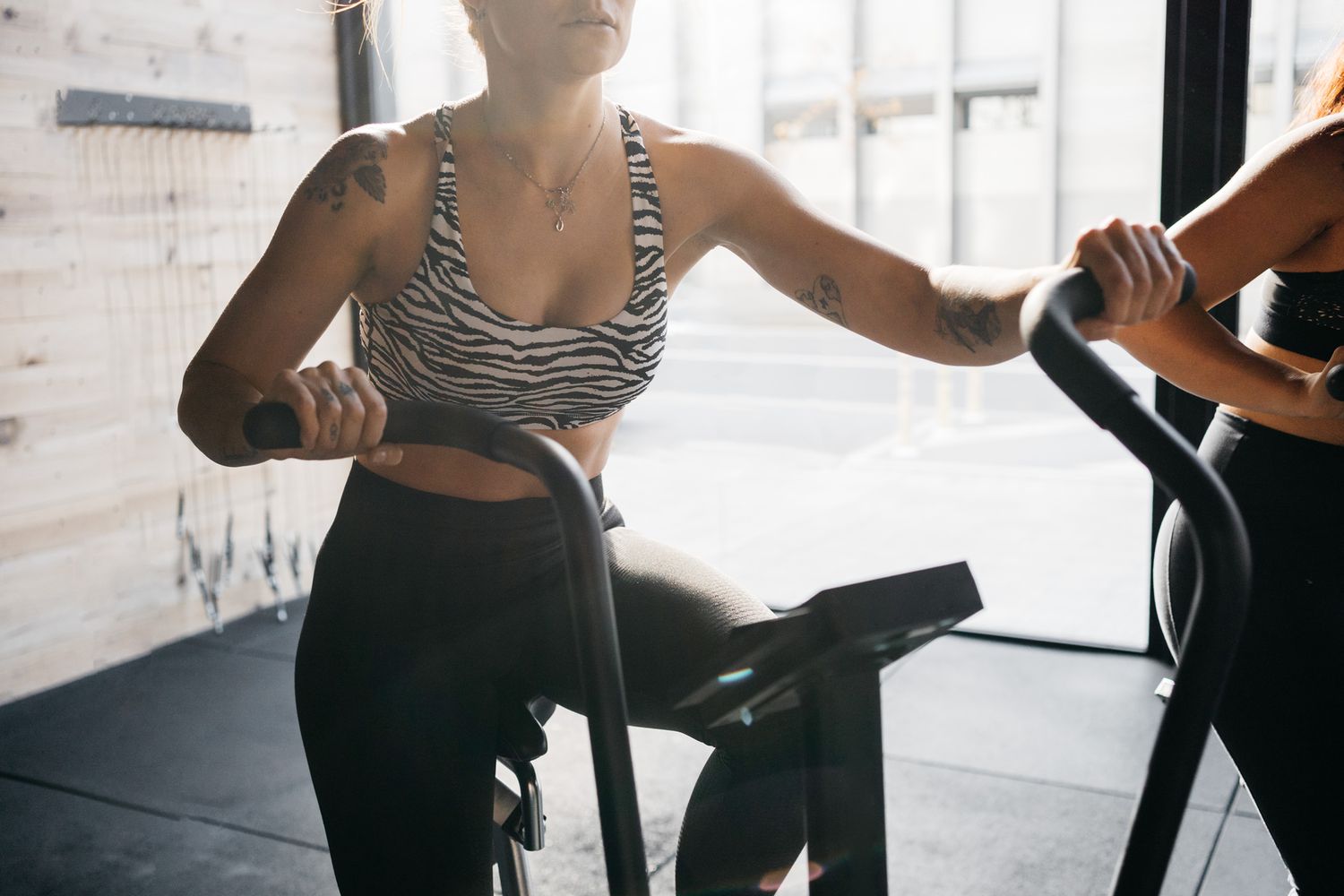What is the Ideal Number of HIIT Workouts per Week?

It's well-known that physical activity is beneficial for health—regular exercise can help in lowering blood pressure, enhancing mental health and cognitive abilities, and decreasing the likelihood of chronic diseases, such as heart disease and cancer.
The Centers for Disease Control and Prevention (CDC) encourages adults to engage in at least 150 minutes of moderate-intensity aerobic activities or 75 minutes of high-intensity aerobic activities every week, in addition to at least two days of strength training exercises.
For those seeking a more intense exercise routine, high-intensity interval training (HIIT) may be an interesting choice. HIIT involves short cycles of intense exercises, such as sprints or burpees, with cooling down periods in between.
HIIT workouts come with numerous advantages, including improving heart health, reducing abdominal fat, and preserving muscle mass. However, it is possible to overdo HIIT exercises. Let's discuss how to incorporate HIIT training without compromising your health and how many sessions a week before taking a rest day.
Even though the workouts are intense, HIIT can offer a range of benefits for different individuals. Given their high intensity, they can be completed within a shorter timeframe, which makes them optimal for those who are time-starved.
Research supports the benefits of HIIT in improving cardiovascular health, metabolic wellbeing, and cognitive function, as well as in reducing all-cause mortality. HIIT exercises are also versatile—they can be done via different modes of exercise (like cycling, running, swimming), and applicable for all fitness levels.
"HIIT workouts can be enjoyable and mentally stimulating," mentioned Emily Nichols, a Certified Personal Trainer (CPT). "They're excellent ways to boost your heart rate and metabolism for an extended period post-workout, potentially leading to more calories being burned."
What Nichols refers to is a period called excess post-exercise oxygen consumption (EPOC), during which your body works to recover its pre-exercise state, thereby burning more calories.
Given their intensity, HIIT workouts should not be performed daily.
"Your body can't maintain that intensity, both physically and mentally, day after day," Nichols pointed out.
Your body needs at least 24 hours of recovery between HIIT sessions, according to Nichols. Failing to rest adequately can lead to extreme fatigue, lingering soreness, fitness plateaus, hormonal imbalances and ultimately diminished effectiveness of your exercise regimen.
"I advise my clients to do two to three 20-30-minute HIIT sessions per week, separated by 24-48-hour recovery periods," suggested Nichols. "I’m an advocate of interspersing HIIT exercises with active recovery days, for example, walking or yoga, and the other days for strength training."
If you overdo HIIT workouts, you risk facing excessive tiredness and even injuries. "Overdoing HIIT can lead to fatigue, inefficient workouts, or injuries if proper recovery periods are not prioritized," warned Nichols.
The consistency of exercise is key to reap the benefits but it does not equate to not taking time off. "You need down-time for maintaining a regular exercise regime," advised Nichols, "or else, you’re at risk for injury and forced time-off from exercise."
Cortisol, a hormone released during HIIT workouts, can also have undesirable effects on the body.
"Cortisol, released during HIIT workouts, triggers your sympathetic nervous system, or the fight-or-flight response, which in turn contributes to metabolic enhancements," informed Norma Orellana, NP, a cardiology nurse at UCLA Health.
"However, excessive cortisol can pose problems, which underlines the importance of rest and recovery periods after workouts," added Orellana.
High cortisol levels can result in fatigue, mood swings, sleep issues, and anxiety, and even compromise the immune system, increasing your risk of falling ill, warned Orellana.
Only relying on HIIT workouts can also lead to boredom.
"Having a variety in your fitness regime is beneficial for the body," suggested Nichols. "A balanced routine comprising strength training, active recovery, followed by HIIT workouts, can yield results with regularity."
HIIT can be adapted by most individuals, but as always, you should consult a healthcare professional before starting any new fitness regimen.
People who have a history of, or who currently have cardiac conditions should avoid HIIT workouts until they’ve been cleared by their cardiologist to participate. “This is due to the demand these types of workouts have on the heart,” said Orellana.
But once you’re cleared by a healthcare professional, you’re good to go. “Ensure a proper warm-up before starting a HIIT workout, and if you’re brand new then work with a certified personal trainer to keep proper form to avoid injury,” said Nichols.
Overall, the benefits of HIIT are considerable, but it is important not to overdo it so that you can continue to reap them. Injury, fatigue, burnout, and hormonal imbalances are just a few of the risks that can occur from overtraining, so keep your HIIT schedule to just a few times per week to maximize your results.




